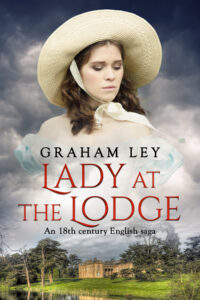Graham Ley is the author of the Wentworth Family Regency Saga Series: absorbing historical novels set against the backdrop of the French Revolution. The third instalment, Lady at the Lodge, is out now.
My novels are set in the period just before the rise of the great names of Napoleon and Nelson, and after the stormy days of the French revolution in 1789 and the terror that followed, with the execution of the King and Queen of France and the declaration of a Republic. Great Britain was at war with France from that time, and my first novel started with Britain’s most significant involvement on the continent to date: its support for a force of exiled French landed by the British navy on the Brittany coast at Quiberon.
This small army, clad in red British uniforms and carrying British weapons, formed an uneasy alliance with the remarkable Breton insurrection known as the Chouans, a name that may have come from their mimicry of the call of an owl. Brittany was divided in its loyalties, with the Chouans looking back nostalgically to the monarchy and the Catholic Church, while many in the towns supported the new Republic and its freedoms from the old regime. Like all civil wars, the Chouan revolt was marked by outbursts of great cruelty, with much proceeding in secrecy and poorly armed peasant fighters slipping back into the forests, or raiding unexpectedly in towns.
Since the Middle Ages, the English had been allied with Brittany against the power of France. As one who is half Breton and half English, my hero Justin Wentworth had no need to question his loyalties when going undercover in Brittany to liaise with the rebels on behalf of the British commanders at Quiberon. Justin’s Breton mother Sempronie brought the manor of Kergohan into the family via her marriage to his father, who for his part inherited the manor of Chittesleigh, north of Dartmoor. Underpinning all of the novels is this continuing connection of the Wentworth family with Brittany and with Devon in England, one which involves them in the lives and fates of those who live at Kergohan and Chittesleigh.
Yet for all the historical background against which they play out, I see the novels in personal terms, with ambition, greed, deceit, loyalty, honour and love as major motives in the lives of the characters, whether French Republicans, former slaves from the Caribbean, Breton farmers and villagers or English gentry, soldiers, Quakers or actresses. That is why it may be best to see these as romantic historical novels, since romance need not be confined exclusively to salons, drawing rooms and assemblies — of which there are still many to be found in the shifting scenes that make up these stories.

